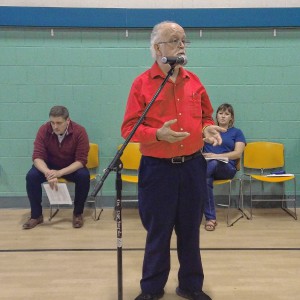Report shows towns not meeting CPA guidelines
| Published: 06-18-2023 5:00 PM |
A report done by the Greater Boston Real Estate Board and Center for State Policy Analysis at Tufts University shows that several municipalities which have adopted the Community Preservation Act (CPA) haven’t spent money they’ve put aside for affordable housing.
However, officials say it’s a lack of viable housing applications that is staying their hand on the checkbook.
Passed in 2000 by then-Gov. Paul Cellucci, the CPA was designed as a smart growth tool to help cities and towns preserve open space and historic sites, create affordable housing, and develop outdoor recreational facilities. This is paid for through a surcharge of not more than 3% of property taxes, which the state matches, up to 100%. To date, 195 communities have adopted the CPA, according to the Community Preservation Coalition web site. This number includes Royalston and Phillipston. Doing so is entirely voluntary, and they can withdraw at any time.
Among the rules of the CPA is that 30 percent of the money collected be allocated for open space/historic preservation, affordable housing and recreational, at 10 percent each. This money can be spent the year it is set aside or later. An additional 5% can be set aside for administrative purposes, with the rest going to a general fund. Applications can be made for CPA funds, which is decided on by a local governing body and approved at Town Meeting, or another similar procedure.
The report shows that only one in five CPA projects are dedicated to affordable housing, and less than one in 20 involves the creation of new homes. Of those municipalities that have adopted the CPA, around half are spending less than 10% on housing.
“CPA funds can help spearhead new development and promote housing construction by filling funding gaps,” the report states. “But CPA-backed housing efforts are not always well integrated into broader town planning.”
Though spending may be down, over the last decade there has been an uptick in housing projects funded through CPA dollars. Following the housing crisis of 2007-2009, the average CPA housing project involved just one or two units—today, it involves nearly seven. However, the report states that CPA funds are rarely able to pay for an entire project, and this money is usually part of a larger funding pool.
The report adds that while affordable housing is a pillar of the CPA, it sometimes conflicts with two other facets—historic preservation and protection of open space.
Article continues after...
Yesterday's Most Read Articles
“Every time you build a park or set land aside for conservation, you’re reducing the amount of space available for housing—and driving up the price of homes in your community,” the report states.
There are several approaches that towns can take, according to the report, such as buying land or existing properties for future construction, hiring consultants to develop housing plans, or new staff to help run local housing programs.
Other recommendations are that additional state funds be offered for those municipalities that commit at least 20 percent of CPA monies to affordable housing, enforce reporting requirements, create a dedicated housing assistance team at the Department of Housing and Community Development and encourage communities to better integrate CPA monies with long-term planning.
Marsha Charest is chair of the Royalston Community Preservation Committee and said while the 10 percent allocation for affordable housing has been done each year, there’s only been one inquiry for that type of project. Charest estimated that the town receives $36,000 annually through the CPA and state match. The town adopted the CPA in November 2008.
“The cost of restoring a current house to support (affordable) housing is too costly for what funds are in there,” she said. “You don’t get the value back and need money from other resources.”
Housing aside, Charest said the CPA has been a great benefit to Royalston. Among the projects paid for through CPA funds is the restoration of portraits at the library, construction of a gazebo in the South Village, work to the Town Hall—considered a historic building—and restoration of the first firehouse in Royalston and the Raymond School.
“It’s definitely the CPA funds that makes it (these projects) happen,” said Charest. “With 1,200 people, the town doesn’t have the funds to do it. These are the things that we look at and it helps the town.”
In Phillipston, little progress has been made on spending the approximately $800,000 that has been collected in CPA funds since the town joined the program in 2007. Linda Langevin of the town’s Community Preservation Committee, said the group has languished for years, and the current makeup—which has only been in place since last fall—is eager to get the word out so the money can be used.
“We (the committee) just met and will work on getting a public hearing for the purpose of educating the town and developers in community housing to let people know that the CPC has funds and is willing to grant the funds to the appropriate candidates,” said Langevin.
The CPC has one pending project—a pavilion for a community park behind the police station being constructed by an Eagle Scout. An attempt was made to allocate $50,000 to update the steeple at the Congregational Church, but Langevin said the Selectboard voted to not have this on the Town Meeting warrant, as it conflicted with laws prohibiting a church or non-profit being subsidized by the town. Another $4,000 was supposed to be used for a historical preservation project, but a lack of information on the Historical Commission’s role led to it missing the deadline to be placed on the Town Meeting warrant.
When asked about the challenges to spending money set aside for affordable housing, Langevin cited the fact that Phillipston—like many rural communities—lacks town sewer or water, which adds to a developer’s budget. She added that frontage requirements for multi-family houses mean there are limited spots for such projects in Phillipston. Langevin hopes that the future public hearing can help stir interest for more housing projects.
“Over the last few years, the CPC has not received any applications for community housing,” she said. “Therefore, nothing has been acted upon.”
Max Bowen can be reached at mbowen@recorder.com or 413-930-4074.

 Sportsman’s Corner: The quest for the Super Slam
Sportsman’s Corner: The quest for the Super Slam Annual ‘Food-A-Thon’ returns
Annual ‘Food-A-Thon’ returns Erving Town Meeting voters back Care Drive housing project
Erving Town Meeting voters back Care Drive housing project North Quabbin Notes, May 9
North Quabbin Notes, May 9